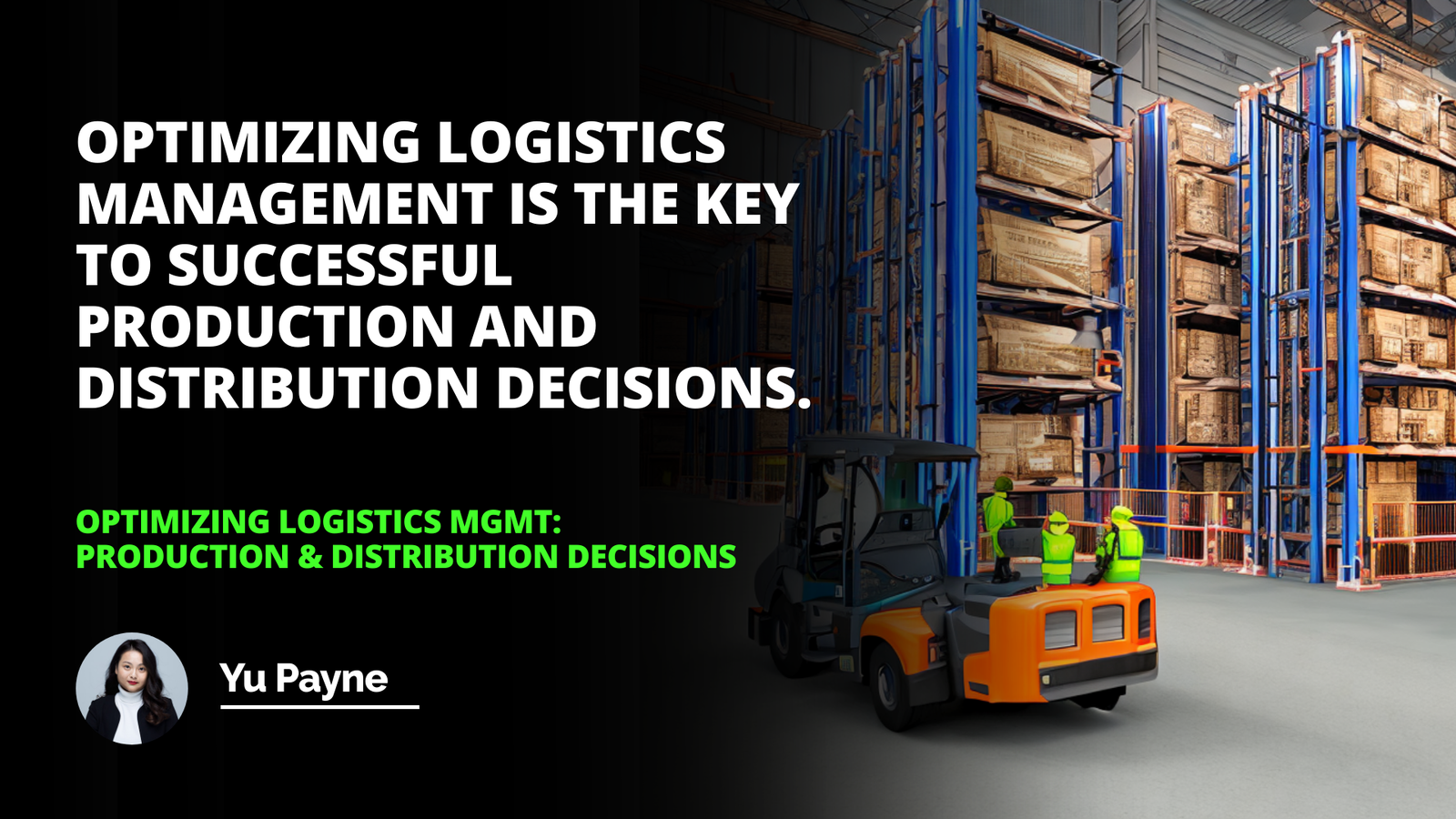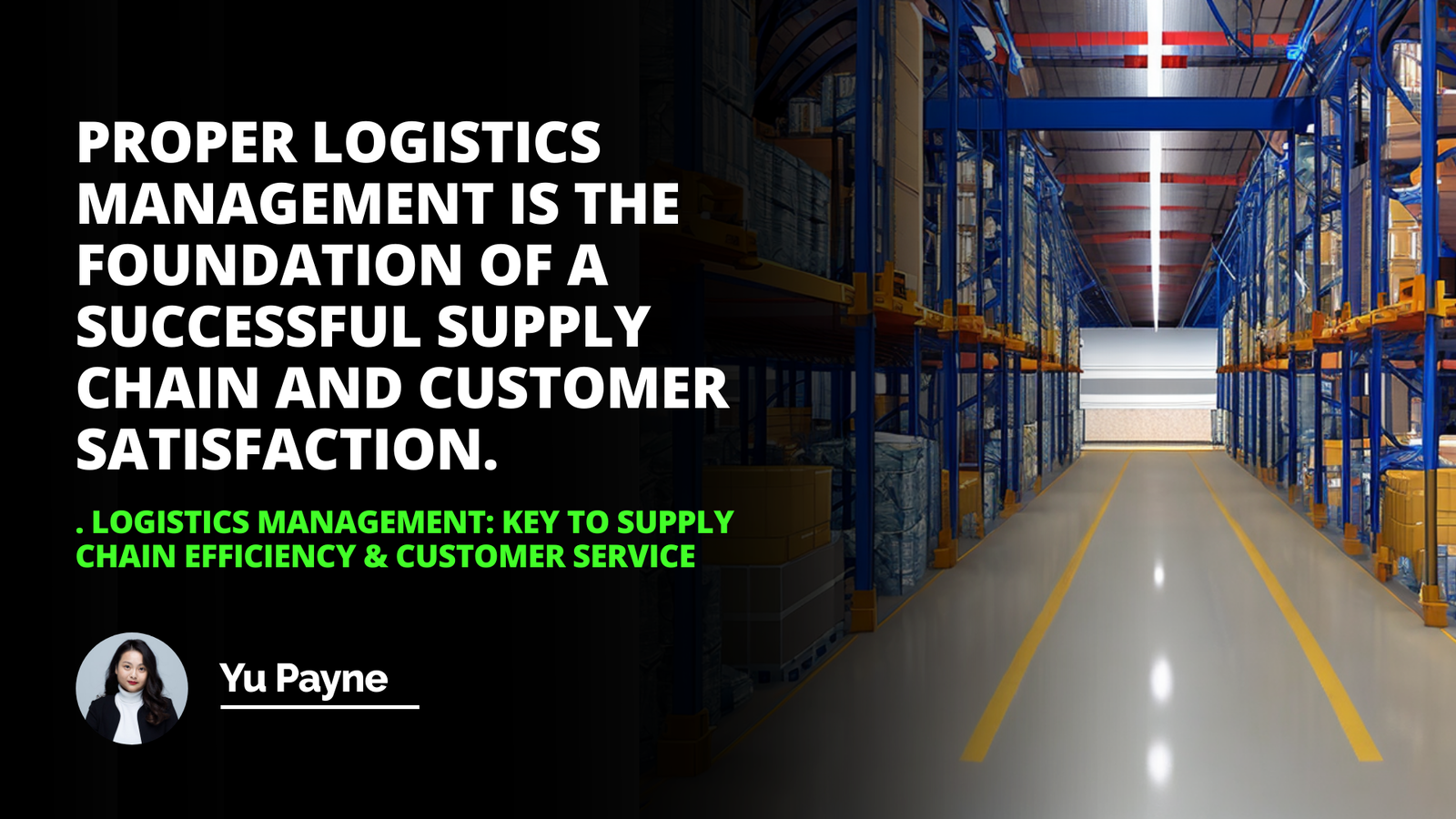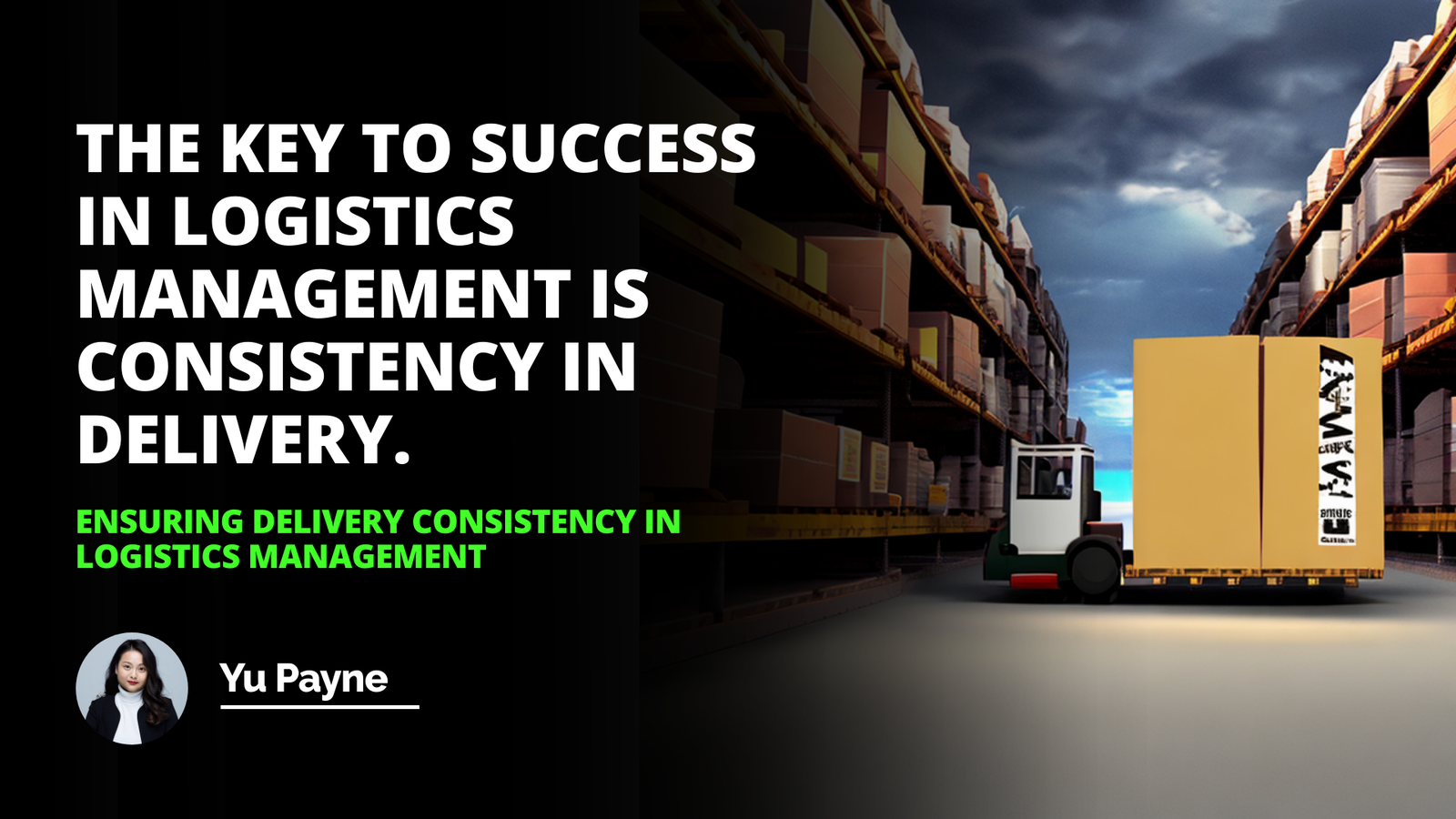
Challenges of Warehousing
Solutions for Logistical Challenges
Application of Automation in Warehousing
Warehousing is the process of storing products in a safe and organized way before distribution or sale. It also encompasses the transportation of products to and from one destination to another. It is an essential function in the physical supply chain. It is ideally situated at the center of a business's operations. Warehousing can be used to optimize logistical performance, reduce costs, and increase customer satisfaction.
When considering a business's success level, warehousing significantly affects the efficiency, storage capacity, and availability of products for sale. But like any process, warehousing can come with its challenges. From lack of expertise to the possible cost of warehousing, effectively managing logistics operations is no easy task.
Challenges of Warehousing
One of the biggest challenges in warehousing operations is acquiring and maintaining the expertise necessary for effective management. Warehousing requires a team of experienced professionals for efficient operations. Without the proper knowledge and skills, it is easy to overlook how crucial it is to manage the warehouses well - leading to delays and other costly mishaps.
Furthermore, the actual cost of warehousing needs to be addressed. Companies only sometimes factor in the prices of storing and managing the various products in their warehouses. This can lead to overexpansion of capacity, leading to unnecessary costs. Furthermore, a lack of understanding of the necessary space can cause difficulties when trying to fit products or increase efficiency.
Solutions for Logistical Challenges
Automation is one of the most critical solutions to the logistical challenges warehousing faces. Automation technology can make warehousing operations more efficient, cost-effective, and safe. Automated tools, AI-driven data, and automated storage and retrieval systems (AS/RS) can significantly reduce the manual labor involved in warehousing processes.
Additionally, with a team of experienced warehousing professionals, it is possible to manage operations and inventories effectively. This team should comprise warehouse analysts and operations personnel who can work together to analyze the effectiveness of logistical processes and ensure maximum efficiency.
Finally, effective space utilization is critical in warehousing. Companies must optimize the use of space and equipment in their warehouses to achieve the best use of resources. This includes the organized and proper placement of products, efficient warehousing systems, and the management of tracking systems.
Application of Automation in Warehousing
Automation technology has seen transformative use in various industries, including warehousing. Automation can improve efficiency and reduce labor costs while providing a safer workspace. Automation also offers a more consistent and accurate level of inventory tracking, which is essential in warehouses.
Examples of automation used in warehousing include robotic picking, voice picking, barcode scanning and labeling, automated storage and retrieval systems, 3D warehousing software, and RFID technology. These technologies are designed to reduce the labor-intensive work of manual warehousing operations, making them more efficient and cost-effective.
Conclusion: Warehousing requires effective logistical operations for optimal success. Warehousing operations often face challenges, from lack of expertise to cost and space management. To address these challenges, businesses must use automation, advocate for a team of experienced professionals, and utilize space effectively. Automation technologies offer numerous benefits, from improved efficiency to accurate inventory tracking. By using these solutions, businesses can ensure they take full advantage of their logistical operations and meet their warehousing goals.
An effective warehouse can be the solution to a company's logistical problems.
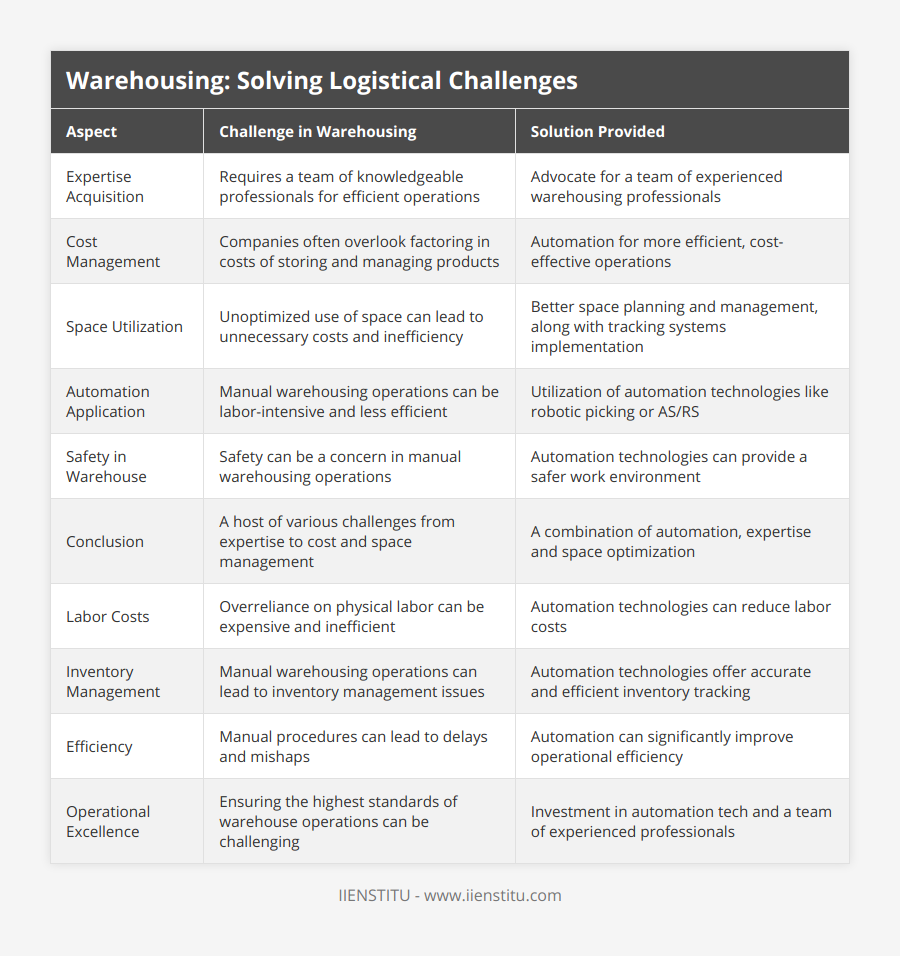
Frequently Asked Questions
What strategies can be used to optimize warehousing operations?
In any industry, streamlined warehousing operations can be essential for a business to succeed. Practical strategies to optimize warehouse operations can reduce costs and provide more efficient storage and distribution. This article will discuss a few strategies that can be used to optimize warehouse operations and increase efficiency.
Investing in warehouse management systems (WMS) can improve warehouse operations. WMS are specialized software programs for tracking inventory and order activity, managing warehouse operations, and streamlining shipments. These software tools can store, manage, and track inventory and streamline order fulfillment and shipping operations. As a result, investing in WMS can help reduce labor costs, streamline fulfillment operations, and improve inventory accuracy and management.
In addition, warehouse operators can implement just-in-time (JIT) principles to optimize their operations. The JIT approach is an inventory system focused on reducing inventory levels, improving warehouse space utilization, and efficient production and distribution. This approach can benefit warehousing operations because it allows for the control and efficient use of materials and increases the overall production efficiency. The results of a JIT approach can be improved profits, increased cash flow, and lower costs.
Lastly, automated processes can be used to improve warehouse operations. Automation can streamline and simplify many processes involved in warehousing, such as receiving and packing, order fulfillment, inventory management, and shipping. As a result, automating processes can reduce processing time and the risk of errors and improve inventory visibility and control. Furthermore, automated processes can optimize the routing and scheduling of delivery vehicles to ensure on-time delivery.
In conclusion, several strategies can be used to optimize warehouse operations. Investment in warehouse management software, implementing JIT principles, and using automation can all help streamline processes and improve efficiency. As a result, businesses can reduce labor costs, streamline fulfillment operations, improve inventory accuracy and management, produce higher profits, and lower costs by optimizing processes.
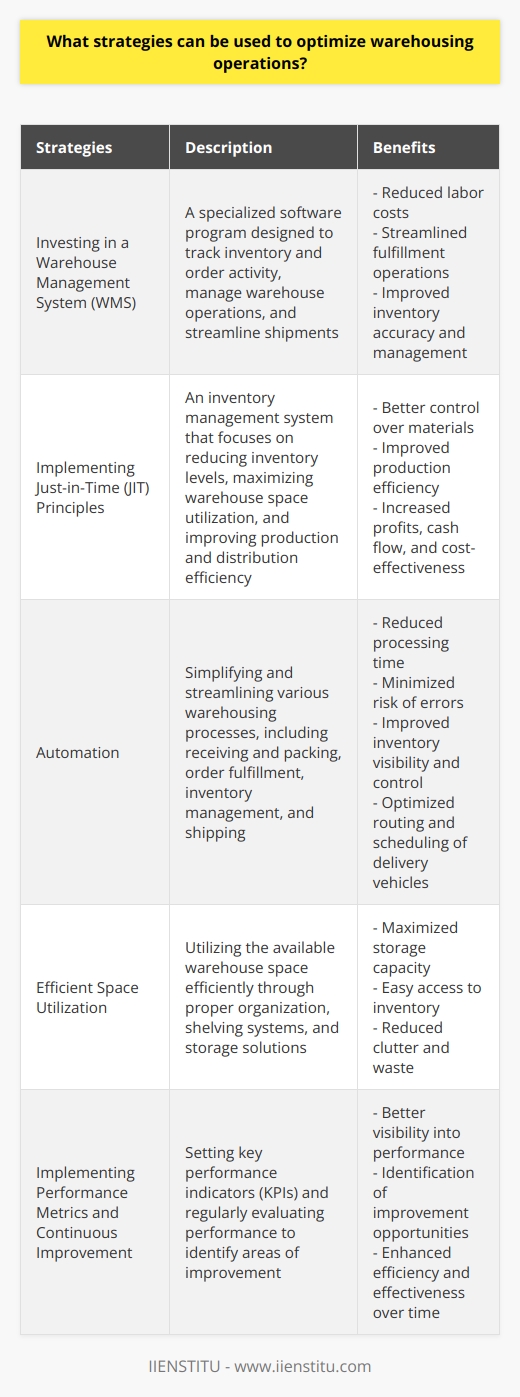
What considerations should be made when selecting a warehousing partner?
When selecting a warehousing partner, it is essential to consider several factors. Analysis of the warehousing partner's physical location and capacity to meet the specific warehousing requirements is paramount. A business should ensure that the partner has sufficient space and availability to meet the company's needs. Moreover, the partner should possess the appropriate personnel to efficiently operate the warehousing operations. Additionally, the partner's technical capability and operational efficiency should be evaluated to ensure the warehouse can remain functional and support the necessary functions, such as picking, packing, warehousing, and more.
The partner's safety and security measures should also be evaluated to guarantee the safe storage and handling of goods within the warehouse. It is essential to ensure the partner's ability to handle emergencies appropriately and adhere to regulations and industry standards. Furthermore, a business should assess an understanding of the warehousing partner's knowledge. Visiting the facility and obtaining feedback from previous customers can help to inform the decision. Lastly, a business should consider the financial costs of using a warehousing partner, special services available, and contractual arrangements.
In conclusion, selecting the right warehousing partner is vital to business operations. A business should consider the partner's physical location, capacity, and personnel, as well as its technical capability, operational efficiency, safety and security measures, and overall understanding of the industry. It is also necessary to assess the associated costs and contractual arrangements. By considering these considerations, a business should be able to select a warehousing partner that can adequately meet its requirements.
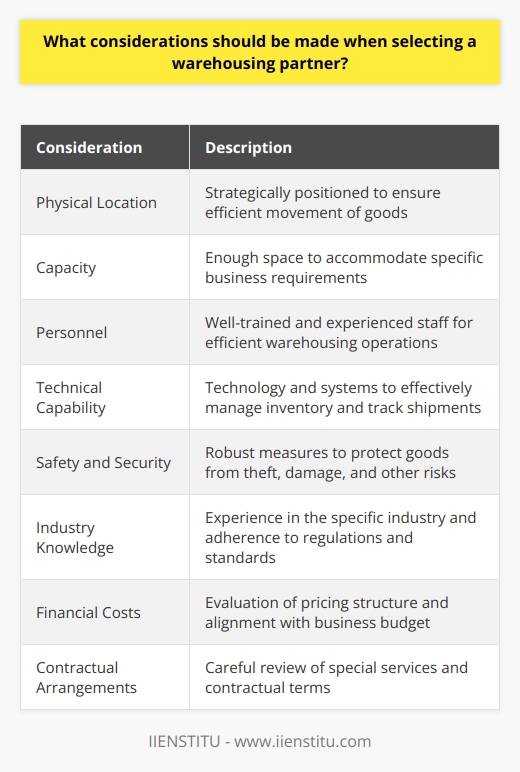
What common challenges arise in terms of the costs of operating a warehouse?
Solving the typical costs incurred when operating a warehouse is an ongoing challenge for almost all businesses. The warehouse is a critical component of the supply chain for many companies. It is responsible for efficiently storing, retrieving, and distributing goods. Unfortunately, the costs associated with warehouse management are high, up to 83% of some industries' total supply chain costs. Due to the high price of warehousing operations, warehouse managers must find ways of optimizing their warehouses for cost efficiency.
One of the primary challenges of the efficient costs of operating a warehouse is the cost of labor. Labor costs can be the most significant expense for many warehouses. Therefore, monitoring and keeping labor costs to a minimum is essential. This can be accomplished through automation and other techniques, such as cross-docking, to reduce the time required to complete tasks.
Another significant cost associated with operating a warehouse is storage costs. As inventory is accumulated, storage costs can quickly add up. Many warehouses must work within the limits of their storage capacity, and it is essential to ensure that warehouses are set up efficiently to maximize the use of the space available. Technologies such as automated storage and retrieval systems can reduce the space needed for storage and improve the speed of operations.
The costs of running a warehouse also include inventory costs. Managing the purchasing, processing, and inventory of products can be an expensive endeavor for any business. By utilizing inventory management tools and tracking systems, warehouses can minimize the amount of stock that needs to be managed. Additionally, inventory tracking systems can help reduce out-of-stock product costs by allowing warehouses to identify and rectify shortages quickly.
Finally, the cost of operating a warehouse also includes energy consumption. Warehouses must be cooled, heated, and lit, amounting to significant expenses. Companies can reduce energy consumption by utilizing green practices such as energy-efficient lighting, motion sensors, and insulation.
In conclusion, the cost of operating a warehouse is a demanding challenge. However, with the right strategies and technologies, companies can reduce their costs and increase the efficiency of their warehouse operations.
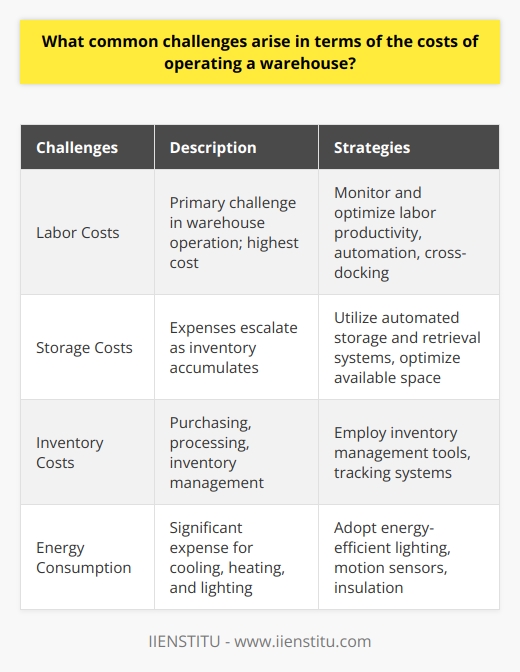
What are the main factors contributing to the importance of warehousing within logistics operations?
Role of Warehousing in Logistics Operations
Efficient Inventory Management
One of the main factors contributing to the importance of warehousing within logistics operations is efficient inventory management. Warehouses allow businesses to store products safely and securely, ensuring that they are protected from damage and theft. Proper inventory management helps organizations track stock levels, avoid stockouts and overstock situations, and maintain optimal quantities of goods available for sale or distribution.
Accommodating Fluctuations in Demand
Warehouses also play a vital role in accommodating fluctuations in demand. As customer demand for products varies throughout the year, warehousing allows companies to hold stock and ensure they can meet fluctuations in demand efficiently. This capability helps organizations prevent potential revenue losses due to missed opportunities and enables businesses to maintain customer satisfaction by consistently meeting their needs.
Economies of Scale
Another significant factor contributing to the importance of warehousing is economies of scale. By storing large quantities of goods in warehouses, businesses can benefit from lower per-unit storage costs, due to a combination of factors such as bulk purchasing, efficient space utilization, and optimized handling processes. These cost savings can be passed on to customers through lower prices, which can lead to increased sales and enhanced profitability for businesses.
Value-Adding Services
Warehousing also contributes to logistics operations by providing value-adding services. Some examples of these services include order fulfillment, cross-docking, packaging, quality control, and labeling. Businesses can outsource these functions to specialized warehouses, which can be more efficient and cost-effective than performing them in-house. This increased efficiency and specialization can lead to improved overall supply chain performance.
Facilitating Coordination between Different Actors
Lastly, warehouses play a critical role in facilitating coordination between different actors within the supply chain. Warehouses serve as central points to consolidate products from multiple suppliers, which can then be distributed to customers through an integrated transport network. This coordination and consolidation of products streamline the supply chain and allow businesses to optimize their logistics operations.
Conclusively, warehousing is an essential component of logistics operations by enhancing inventory management, accommodating fluctuations in demand, providing economies of scale, offering value-adding services, and facilitating coordination within the supply chain. Businesses leveraging warehousing effectively can improve their efficiency, reduce costs, and ultimately enhance their competitive position in the market.

How can technology innovations help to address and overcome warehouse challenges in logistics?
Efficient utilization of technology
Technology innovations in the logistics sector can significantly address and overcome warehouse challenges. One major challenge is the efficient utilization of warehouse space. Warehouse management systems (WMS) can optimize space usage by tracking and managing inventory data, reducing fragmentation and improving storage density.
Enhancement of pick and pack processes
Another challenge is the enhancement of pick and pack processes. Advanced order picking technologies such as voice technology, wearable computers, and pick-to-light systems can significantly increase order picking precision and speed, thereby reducing errors and increasing efficiency in the logistics process.
Improved tracking capabilities
Furthermore, improved tracking capabilities are essential to overcoming challenges in distribution. Implementing real-time tracking technologies like IoT devices and automated data collection systems allows for greater visibility and control over inventory, warehouse operations, and supply chain processes.
Labor management optimization
In addition, labor management optimization is a key factor in overcoming warehouse challenges. Robotic Process Automation (RPA) and autonomous mobile robots (AMR) can help reduce labor costs by automating repetitive manual tasks, increasing productivity, and enabling warehouse employees to focus on more value-added activities.
Achievement of operational efficiency
Technology innovations can also help achieve operational efficiency by reducing energy consumption and emissions. Energy-efficient lighting systems, smart thermostats, and IoT-based energy management systems can collectively optimize energy usage in warehouses, contributing to a more sustainable logistics sector.
Predictive analytics and forecasting
Lastly, harnessing the power of predictive analytics and forecasting enables warehouses to better anticipate and respond to changes in demand. By integrating data from various sources, modern logistics software provides actionable insights to streamline inventory management, mitigate risks, and make informed decisions.
In conclusion, technology innovations are critical for addressing and overcoming warehouse challenges in logistics. By implementing solutions such as WMS, real-time tracking technologies, automation, and predictive analytics, warehouses can optimize space, improve overall efficiency, and ensure an effective and sustainable logistics process.
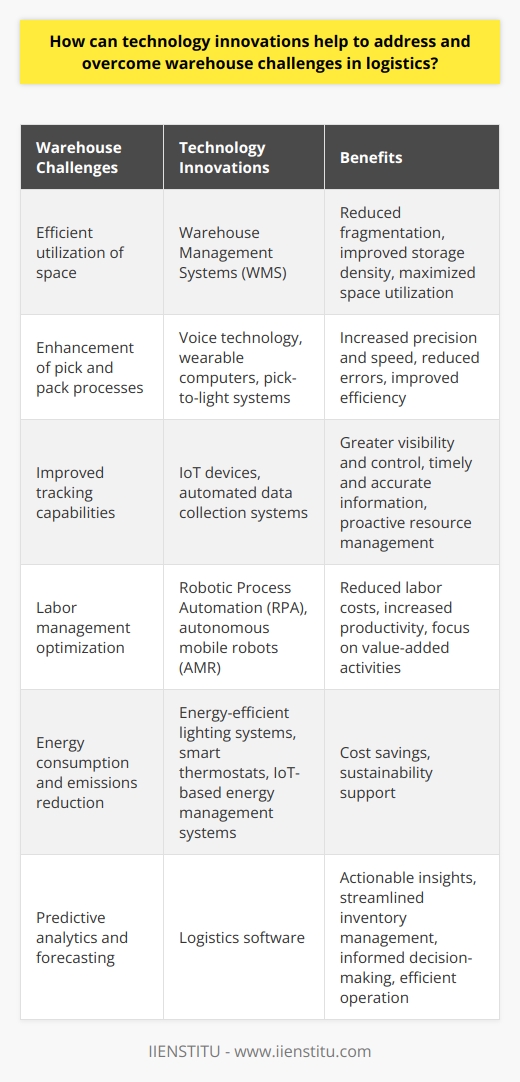
To what extent does warehouse efficiency have an impact on the overall effectiveness of logistic systems?
Warehouse Efficiency: A Key Element in Logistic Systems
The efficiency of a warehouse greatly impacts the overall effectiveness of logistic systems, as it directly relates to major aspects such as timely order fulfillment, resource utilization, and cost reduction. By optimizing warehouse operations, businesses can achieve higher levels of customer satisfaction and operational performance.
Role in Order Fulfillment
A well-organized warehouse ensures the quick and accurate processing of orders, which is vital for meeting customers' demands and expectations. Efficient warehouse practices, such as proper organization of inventory, implementation of advanced technology, and effective communication between staff, contribute to a streamlined order fulfillment process. Consequently, a higher degree of warehouse efficiency leads to faster delivery times and improved customer satisfaction.
Resource Utilization and Cost Reduction
Optimizing warehouse efficiency also impacts resource utilization, which directly affects the profitability of a logistic system. Efficient resource management in a warehouse includes minimizing wasted space, properly utilizing equipment, and effectively managing labor. By doing so, companies can significantly reduce warehousing costs, which can result in an overall cost reduction in the logistic system. Additionally, efficient utilization of resources means that a warehouse can handle a higher volume of goods with the existing resources, leading to improved productivity and enhanced profitability.
Adaptability to Changing Needs
As logistic systems continuously evolve to accommodate changes in the market and customer preferences, the flexibility of a warehouse becomes crucial in maintaining its efficiency. Adapting to new technologies, warehouse layouts, and inventory management techniques allows a warehouse to maintain optimal efficiency and improve overall logistic system effectiveness. Furthermore, a warehouse with efficient operations can quickly adapt to fluctuations in demand, ensuring a consistent level of service quality to customers.
In conclusion, warehouse efficiency plays an essential role in the overall effectiveness of logistic systems. By focusing on timely order fulfillment, resource utilization, cost reduction, and adaptability, businesses can optimize their warehouse operations, leading to better customer satisfaction and increased profitability. As the global market continues to evolve, the significance of maintaining efficient warehouse practices will only grow in importance for businesses aiming to maintain a competitive edge in the logistic industry.

What are the primary components of warehouse logistics that contribute to its overall efficiency?
Warehouse Layout and Design
The primary components of warehouse logistics that contribute to its overall efficiency include the warehouse layout, inventory management, material handling equipment, and the use of technology. A well-planned warehouse layout ensures the optimal use of available space, providing easy access to stored items and facilitating the efficient movement of goods.
Inventory Management
Efficient inventory management reduces excess stock and mitigates the risk of stockouts, both critical factors influencing warehouse efficiency. This can be achieved through the implementation of various inventory control techniques, such as just-in-time (JIT), economic order quantity (EOQ), and safety stock calculations.
Material Handling Equipment
Utilizing the appropriate material handling equipment for specific tasks enhances efficiency by increasing productivity and reducing the time taken to move goods within the warehouse. Equipment such as forklifts, pallet jacks, and conveyors play an essential role in facilitating smooth warehouse operations.
Use of Technology
Incorporating technology into warehouse logistics streamlines processes and improves overall efficiency. The use of warehouse management systems (WMS), radio frequency identification (RFID) technology, and automated storage and retrieval systems (AS/RS) optimizes inventory tracking, order management, and material handling processes.
In conclusion, focusing on the warehouse layout and design, efficient inventory management, appropriate use of material handling equipment, and the integration of technology are the key components contributing to the overall efficiency of warehouse logistics. These factors, when combined, create a streamlined and effective warehouse operation that meets customer demands while minimizing operational costs.
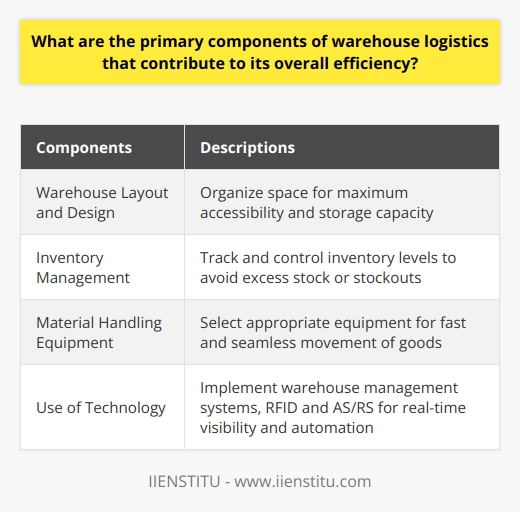
How do external factors, such as changes in market demands or economic fluctuations, impact warehousing operations within the logistics industry?
Impact of Market Demands and Economic Fluctuations
In the logistics industry, warehousing operations play a crucial role in handling, storing, and delivering goods to maintain uninterrupted supply chains. External factors such as changes in market demands or economic fluctuations can significantly impact these operations, leading to strategic adjustments and the need for greater operational efficiency.
Demand Shifts and Warehousing Operations
Market demands constantly shift due to evolving customer preferences, technological advancements, and emerging market trends. When demand increases, warehousing operations are required to accommodate higher inventory levels and expedite order processing to provide timely deliveries. Conversely, decreased demand can result in excess inventory, creating additional warehouse costs and potentially leading to stock obsolescence.
Adaptable warehouse management and predictive technology can help mitigate these negative effects by anticipating demand fluctuations and adjusting operations accordingly. For example, implementing demand forecasting techniques allows companies to optimize stock levels and minimize excess inventory costs.
Effect of Economic Fluctuations on Warehousing Operations
Economic fluctuations present additional challenges for warehousing operations in the logistics industry. Recessions and economic downturns can lead to business closures or reductions in consumer spending, subsequently resulting in decreased demand for goods and services. In turn, warehousing operations may need to downsize, consolidate, or optimize their facilities to reduce operational costs.
On the other hand, periods of economic growth and expansion can generate increased demand for warehouse space and services, resulting in higher occupancy rates and potentially posing challenges for warehousing capacity. In response, logistics companies may focus on expanding warehouse capabilities or exploring alternative storage solutions to accommodate growth.
Modernizing Warehousing Operations
In light of these external factors, modernizing warehousing operations becomes an essential strategy for logistics companies. Incorporating automation, adopting digital inventory management systems, and utilizing data-driven analytics can equip businesses with the ability to better predict, plan for, and adapt to changes in market demands and economic conditions. Moreover, embracing sustainable and environmentally friendly warehousing practices contributes to long-term operational efficiency and corporate social responsibility.
In summary, understanding and adapting to external factors such as market demands and economic fluctuations is a vital aspect of warehousing operations in the logistics industry. By investing in modern technologies and strategic planning, logistics companies can better manage potential challenges and maintain an edge in an ever-evolving business landscape.
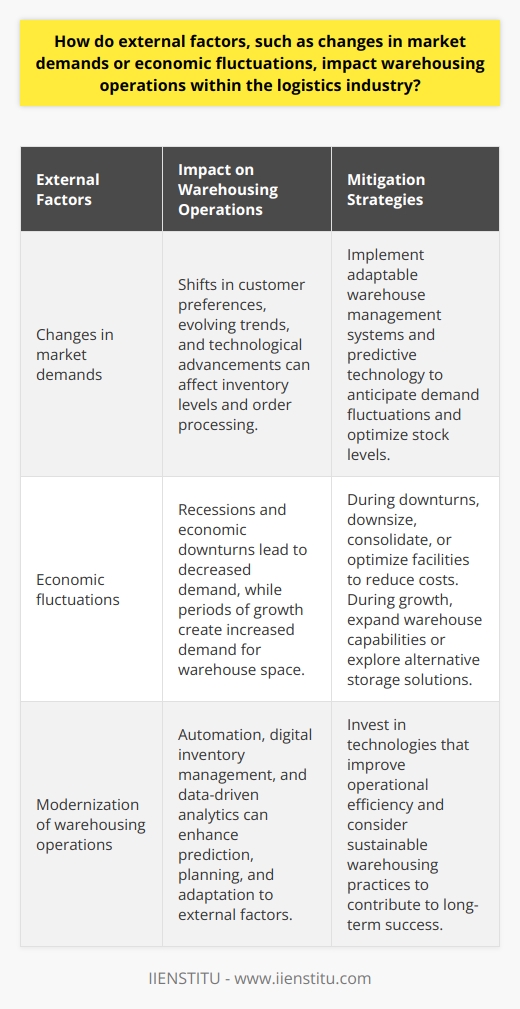
In the context of an increasingly globalized supply chain, how can warehousing logistics adapt to maintain competitiveness and meet the evolving needs of its customers?
**Adapting Warehousing Strategies**
In the face of an ever-growing globalized supply chain, warehousing logistics must continuously adapt to maintain competitiveness and address the changing needs of its customers. One crucial step involves embracing digital transformation, specifically through the implementation of advanced technologies such as artificial intelligence, robotics, and the Internet of Things. These innovations can help streamline and automate warehousing processes, resulting in increased efficiency, reduced costs, and improved customer service.
**Improving Visibility and Connectivity**
Another essential adaptation pertains to enhancing supply chain visibility and connectivity. Warehousing logistics providers must invest in robust data management and analytics platforms to analyze real-time data from a multitude of sources – including suppliers, customers, and regulatory bodies. This analysis allows for better decision-making, precise inventory management, and smoother demand forecasting, ultimately providing warehouse operations with a competitive edge.
**Optimizing Warehouse Layout and Design**
The optimization of warehouse layout and design can play a pivotal role in adapting to the contemporary needs of the globalized supply chain. By employing data-driven techniques to maximize space utilization, warehouse logistics can increase efficiency, reduce operating costs, and facilitate the rapid movement of goods. Furthermore, adopting green building practices and renewable energy sources can promote sustainability and minimize environmental impacts, which are increasingly important factors for customers selecting warehousing service providers.
**Fostering Effective Collaboration**
Effective collaboration among supply chain stakeholders is indispensable for warehousing logistics to adapt to the evolving supply chain landscape. By fostering strong partnerships between suppliers, carriers, customers, and other relevant parties, warehousing logistics can ensure a streamlined flow of information and reflect customer needs more accurately and speedily. Collaboration can lead to better alignment of goals, shared risk management strategies, and greater overall supply chain resilience, helping warehouse logistics providers remain competitive and responsive.
**Pursuit of Continuous Improvement**
Lastly, warehousing logistics must pursue continuous improvement and adopt a culture of innovation. By regularly evaluating their performance, identifying areas of inefficiency, and implementing relevant solutions, warehouse operations can stay ahead of industry trends and customer needs. This proactive approach to change management is vital for sustaining competitiveness in an increasingly globalized supply chain.
In conclusion, by employing technological innovations, improving visibility, collaborating effectively, and prioritizing continuous improvement, warehousing logistics can successfully adapt to the evolving demands of a globalized supply chain and deliver the necessary competitive advantage needed to thrive in the ever-evolving market landscape.

